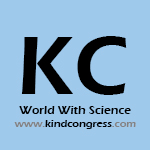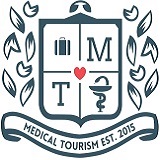
nanotechnology-2021

Theme: An Approach to better Understand Nano Technology
International Webinar on Nanotechnology plans to turn into the main yearly meeting in fields identified with nanotechnology & Nano Materials & science. The objective of Nanotechnology is to accumulate researchers from everywhere the world to introduce progresses in the fields of Nano Materials & science and Nanotechnology and to encourage a climate helpful for trading thoughts and data. This gathering will likewise give an ideal climate to grow new joint efforts and meet specialists on the essentials, applications, and results of the referenced fields.
1.Low-dimensional and 2D materials: Mechanically applicable instances of low-dimensional frameworks are two-dimensional (2D) materials, for example, graphene, layered semiconductors and protectors, topological separators, and so forth The essential objectives of Lowdim are the union of novel 2D materials and the major comprehension of their properties.
2.Surfaces, interfaces and thin films: Surfaces, interfaces and flimsy movies are planar constructions that happen on the limit of a material or at the intersection between two distinctive media. The material science of these frameworks is frequently intensely impacted by their two-dimensional nature.
3.Nanocomposites and catalysts : Polymer nanocomposites utilized as photocatalytic materials in fine natural responses or in natural poisons debasement. The determination of the polymer substrates for the immobilization of the dynamic impetus particles is inspired by a few favorable circumstances showed by them, for example, Environmental solidness, compound idleness and protection from bright radiations, mechanical soundness, low costs and simplicity accessibility. Furthermore, the utilization of polymer nanocomposites as photocatalysts offers the chance of an easy detachment and reuse of the materials, killing subsequently the post-treatment division measures and certainly decreasing the expenses of the system. This survey covers the polymer-based photocatalytic materials containing the most well known inorganic nanoparticles with great synergist execution under UV or noticeable light, specifically TiO2, ZnO, CeO2, or plasmonic (Ag, Au, Pt, Pd) NPs. The examination is primarily focused on the readiness, photocatalytic action, methodologies coordinated toward the expansion of photocatalytic productivity under noticeable light and reuse of the half and half polymer impetuses.
4.Multifunctional Nanomaterials: The field of nanotechnology has prompted the advancement of numerous inventive techniques for powerful recognition and therapy of malignant growth, beating restrictions related with regular disease determination and treatment. Multifunctional nanoparticle frameworks can incorporate imaging, focusing on and treatment moieties on a superficial level and in the center, bringing about the focused conveyance of the imaging or treatment modalities, explicitly to the tumor. Multifunctional nanoparticles additionally empower concurrent conveyance of different therapy specialists, bringing about successful combinatorial restorative regimens against malignant growth. In this audit, different multifunctional nanoparticle frameworks that include an assortment of focusing on moieties for in vitro as well as in vivo disease imaging and treatment are examined.
5.Molecular and nanoelectronics: Sub-atomic hardware is imagined as a promising contender for the nanoelectronics of things to come. More than a conceivable response to extreme scaling down issue in nanoelectronics, atomic gadgets is predicted as a potential approach to collect a huge quantities of nanoscale objects (atoms, nanoparticules, nanotubes and nanowires) to frame new gadgets also, circuit structures. It is likewise an intriguing way to deal with essentially lessen the creation costs, just as the energetical expenses of calculation, contrasted with normal semiconductor innovations. Also, atomic gadgets is a field with a huge range of examinations: from quantum objects for testing new standards, to mixture atomic silicon CMOS gadgets. Notwithstanding, issues stay to be addressed (for example a better control of the particle terminal interfaces, enhancements of the reproducibility and unwavering quality, and so on ).
6.Sensors, actuators and NEMS/MEMS: The growing and creating fields of miniature electromechanical frameworks (MEMS) and nano-electromechanical (NEMS) are profoundly interdisciplinary and depend intensely on trial mechanics for materials choice, measure approval, plan improvement, and gadget portrayal. These gadgets range from mechanical sensors and actuators, to microanalysis and compound sensors, to miniature optical frameworks and bioMEMS for infinitesimal medical procedure. Their applications range the auto business, interchanges, protection frameworks, public security, medical care, data innovation, flying, and natural observing. This part gives an overall prologue to the manufacture cycles and materials usually utilized in MEMS/NEMS, just as a conversation of the use of exploratory mechanics methods to these gadgets. Mechanics gives that emerge in chosen model gadgets are additionally introduced.
7.Nanomagnetism and spintronics: The Nanomagnetism and Spintronics (NanoSpin) Group centers around trial investigations of attractive, magneto-optical, and turn transport wonders in new utilitarian materials and half breed nanoscale structures.
8.Nanotechnology for energy harnessing, transport and storage: Nanotechnology is being utilized to diminish the expense of impetuses utilized in energy units.Nanotechnology is likewise being utilized to improve the productivity of films utilized in energy units to isolate hydrogen particles from different gases, for example, oxygen. Nanomaterials help in diminishing the dispersion length and consequently improve the energy of the activity of an energy stockpiling gadget. Consequently, nanomaterials can improve the charge-release rates. The electron transport inside the cathode is likewise improved by nanometer-sized particles. Various forthcoming advantages for wellbeing and the climate are offered by nanotechnology, with designed nanomaterials being produced for sustainable power catch and battery stockpiling, water sanitization, food bundling, natural sensors, and remediation, just as greener designing and assembling.
9.Nanostructured solar cells and thermoelectrics : Thermoelectric gadgets can change over warmth into power. Numerous temperature detecting gadgets exploit this impact by utilizing power to gauge the temperature in gadgets called thermocouples. Different analysts have made thermoelectric nanowires. Different specialists are attempting to create modest and proficient thermoelectric materials that can change squander heat into power. As of late, there was a declaration that specialists at Berkeley had made silicon nanowires that convert heat into power utilizing a thermoelectric impact. One potential utilization of these is to charge versatile gadgets. The wires could be basically be implanted in the texture, so your coat could turn into a charging station, utilizing your body warmth to create the power. Different scientists have made thermoelectric nanowires. The distinction with Berkeley's work is that they have decreased the width of the wires and changed the surface to lessen the warm conductivity while keeping up the electrical conductivity, a vital necessity of thermoelectric materials.
10.Environmental nanotechnology: Energy and climate mark the two key difficulties to individuals for the future supportability of the planet. Current advancements have been amazingly effective in giving sustainable power sources and directing natural remediation. At that point the collaborations among energy, climate, and innovation push the general public pushing ahead to additional human progress. Be that as it may, such clears are likewise making the ecological issues severer and more convoluted. Natural manageability concerns worldwide environmental change and contaminations, e.g., air, soil, and water. Up to now, environmental change is as yet disputable even in major created nations. Past the transmit of innovation, direct proof from research, public mindfulness, and the public authority should assume a cooperative part in confronting environmental change. Interim, accessible advancements can offer direct control to ecological contaminations from an assortment of sources, for instance, weighty metals, natural mixes, organic or radiation dangers, oil slicks, and microplastics, and so forth As of late, the advances for ecological applications, for example, detecting and remediation, have been significantly exceptional by the utilization of nanomaterials (Khin et al., 2012). This proved the arising and advancing of natural nanotechnology.
Market measure for Value Added Nano Technology is anticipated to grow impressively faster than the ordinary improvement of separated mechanical divisions. We recommend that the European Commission talk about additional with the hypothesis markets (subsidizing and other private monetary authorities) in order to ensure better headway presentation of the assessment. This ought to moreover lessen the fundamental chance to-publicize pointers for Value Added Nano Technology
Nano Technology will reach $6,000 million by 2020 and select a CAGR of 10.2% inside the zone Materials Chemistry is made a smidgen at a time each day. The world vehicle inside materials feature is quantifiable to be USD 46.63 in 2018 and is foreseen to create at a CAGR of three.5% to win in USD 55.41 billion by 2023. the event in show off is evaluated to be driven by the growing energy for aerogel materials from oil and gas and improvement applications. The North yank space remains the greatest market, followed by Asia-Pacific. The Europe show off is surveyed to be improvement at an unending rate in light of cash related recovery inside the space on board the extending worry for the structure protection and significance spare stores. The U.S. Division of Labour Statistics (BLS) makes yearly pay measures for each 800 individual occupations. Starting late delivered figures for 2012 spot BLS Code 19-2032 (a word related amassing close materials authorities) in 82nd spot in yearly wages. The get-together, which contains seven, 970 specialists the state over, show a standard yearly compensation of $89,740.Market Value This market is required to reach $37.8 billion by 2015 and $44.2 billion by 2020, enrolling a compound yearly development rate (CAGR) of 3.2% from 2015 to 2020. Gathering Series sorts out 1000+ Global occasions each year over the globe with help from 1000+ more logical social orders and Publishes 700 Open access diaries which contains more than 50000 prominent characters, rumoured researchers as publication board individuals.
The readiness of money related pros to assign their advantages into adventures related with progress and market execution of Value Added Materials is displayed in Figure. Interviewees obviously believe that the most promising hypothesis divisions without limits are essentialness and condition, which make up more than 60 for every penny of the open hypothetical portfolio. ICT and vehicle were not extremely situated by private hypothesis guides. They pondered that sweeping endeavour’s own assessment hypotheses made their consideration unnecessary and that these ventures were by and large tended to by private capital in past decades (especially ICT industry).Inside the essentialness division — which ensures the most improvement potential in future — our assessment exhibited the best potential in the imperativeness amassing field, which gathered 33% of the possible theories.
The general market is anticipated to achieve of 2015 and 2020 as course as respect. Extended properties, for instance, high deficiency life, top quality and modulus, diminished weight, acoustic protection, accomplice degree deterioration restriction have induced to advancement inside the requesting. Inclination inside the grungy material expenses and non-recyclable nature of composites address an exceptional risk inside the improvement of the market.
Market Growth of Nano Technology & Nano Materials in the last and up and coming ten years: The overall shrewd glass exhibit is expected to create from USD 2.34 Billion out of 2015 to USD 8.13 Billion by 2022, at a CAGR of nineteen.2% inside the area of 2016 and 2022.The overall material market was lofty at $149 million out of 2015, and is expected to accomplish $1,387 million by 2022, creating at a CAGR of 39.7% in the midst of the check time allotment. The overall commercial centre for metallurgy components and powder shipments was 4.3 billion pounds (regarded at $20.7 billion) in 2011 and created to in regards to four.5 billion pounds ($20.5 billion) in 2012. This market is depended upon to acknowledge five.4 billion pounds (an estimation of in regards to $26.5 billion) by 2018.
Nano Technology is proposed to flexibly broad meetings that address late degrees of progress related new ways for advancement of most recent materials for world needs with a target to place in a discussion among associations and instructional exercise affiliations and data move from appraisal to exchange. Materials Chemistry-2016 spreads the zones of Materials Chemistry and Engineering, Energy Materials, Mining and Chemistry, Surface Chemistry and Engineering, Biomaterials and Tissue Engineering, Materials Science, mix compound Technology, rising fields in Materials Chemistry and applied science .All this has gotten feasible with the different disclosures and signs understanding the occasion of gathered applications. The center reason for Materials Chemistry 2021 get-together is to gracefully an open entryway for the authorities to satisfy, act and trade new thoughts inside the various zones of Nano Technology & Nano Materials Major Advanced Materials Science Associations around the globe.
Meetings International has organized Webinar on Nanotechnology on August 24, 2021. The Theme for the Webinar was “An Approach to Better Understand Nano Technology”. They have conducted Keynote speeches on Low-dimensional and 2D materials, Surfaces, interfaces and thin films Nano composites and catalysts, Multifunctional Nanomaterial’s, Molecular and Nano electronics Sensors, actuators and NEMS/MEMS, Nanomagnetism and spintronics, Environmental nanotechnology and different sessions related to the Webinar. Panel discussions on sensors and the latest research developments in the field of Nanotechnology.
- Low-dimensional and 2D materials
- Surfaces, interfaces and thin films
- Nanocomposites and catalysts
- Multifunctional Nanomaterials
- Molecular and nanoelectronics
- Sensors, actuators and NEMS/MEMS
- Nanomagnetism and spintronics
- Nanotechnology for energy harnessing, transport and storage
- Nanostructured solar cells and thermoelectrics
- Environmental nanotechnology
- Journal of Nanomaterials & Molecular Nanotechnology
- The Open Access Journal of Science and Technology
3 Renowned Speakers
YOU QIANG
University of Idaho, USA
United States of America
MARGARITA SANCHEZ-DOMINGUEZ
CIMAV Monterrey, MEXICO
Mexico
MOHSEN SHEIKHOLESLAMI
University of Technology, Iran
Iran





























































































































